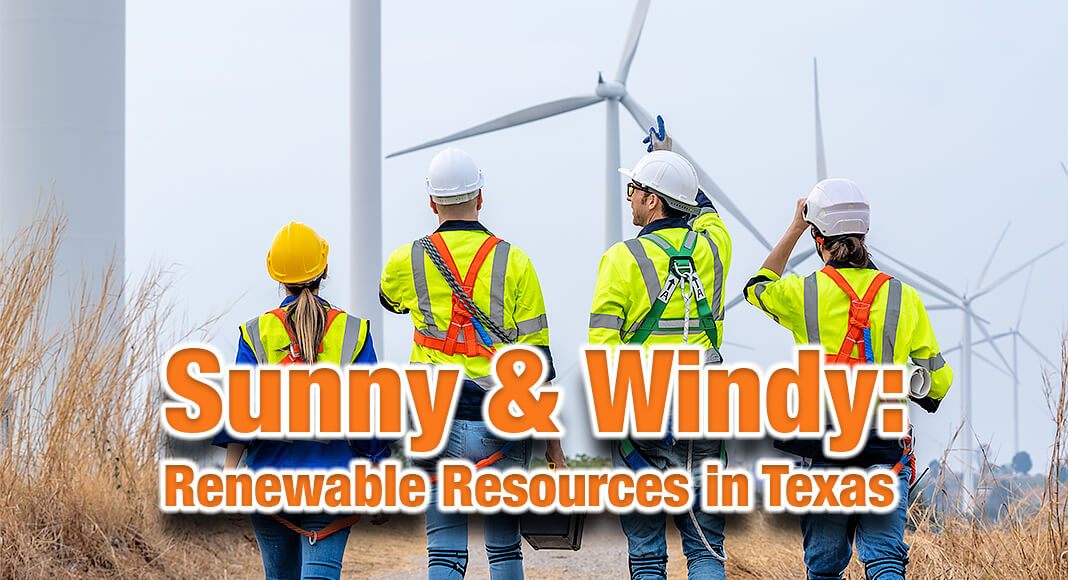
Texas Border Business
Renewable resources are a growing piece of the global energy puzzle and will play a crucial role in meeting future demand while dealing with climate challenges. Texas is adding capacity at a strong pace, which is important in quenching the state’s growing thirst for energy going forward.
Texas has long had more wind power than any other state and continues to add capacity. Earlier this year, the state had almost 37.2 gigawatts (GW) of installed capacity, about 27% of the national total (and six times greater than second ranked California). Given wind patterns and sheer size, Texas has exponentially more potential capacity.
According to the most recent data for utility-scale solar capacity, Texas added 4.3 GW in 2023, pushing cumulative capacity to nearly 15.7 GW. California has been the solar leader for many years, but added just 2.6 GW in 2023 to total 18.1 GW at yearend. It appears as if the Lone Star State has now overtaken California due to the pace of installations this year. Given the dominance of Texas in oil and natural gas and massive investments in emerging sources, it is poised to remain the nation’s energy capital on an ongoing basis.
The rapid growth in renewables is great news, but not without challenges. First, there is a distinction between capacity (maximum output) and generation (the amount actually produced and delivered over a given time period). If the wind isn’t blowing or the sun isn’t shining, generation is obviously reduced. Second, transmission constraints or insufficient demand can cause renewable energy sources to be “curtailed” or wasted.
The urgent need for additional generation capacity and transmission lines is something I’ve discussed in prior columns. Given the location of renewables (particularly wind) in less-populous areas, additional transmission capabilities are crucial to maximizing their potential role. Additional battery capacity would also help balance out the load.
Even with this rapid progress in renewables, more than half of electricity generated in the state is still fueled by natural gas. Maintaining sufficient baseload capacity that doesn’t depend on the weather will be essential to ensuring there is enough power to reliably meet the exploding future requirements of an expanding population and massive new infusions of energy-intensive industries. Fortunately, the state’s abundant natural gas supplies can meet these needs (as well as those of much of the rest of the world) and can be developed and deployed in a responsible manner.
The recent increase in Texas renewable energy has been impressive, adding to the state’s vast portfolio of available options and cementing the state’s role in the global economy. Looking ahead, an “all of the above” strategy will undoubtedly be needed, with multiple options required to ensure sufficient power supplies for a prosperous future. Stay safe!
______________________________
Dr. M. Ray Perryman is President and Chief Executive Officer of The Perryman Group (www.perrymangroup.com), which has served the needs of over 3,000 clients over the past four decades.















